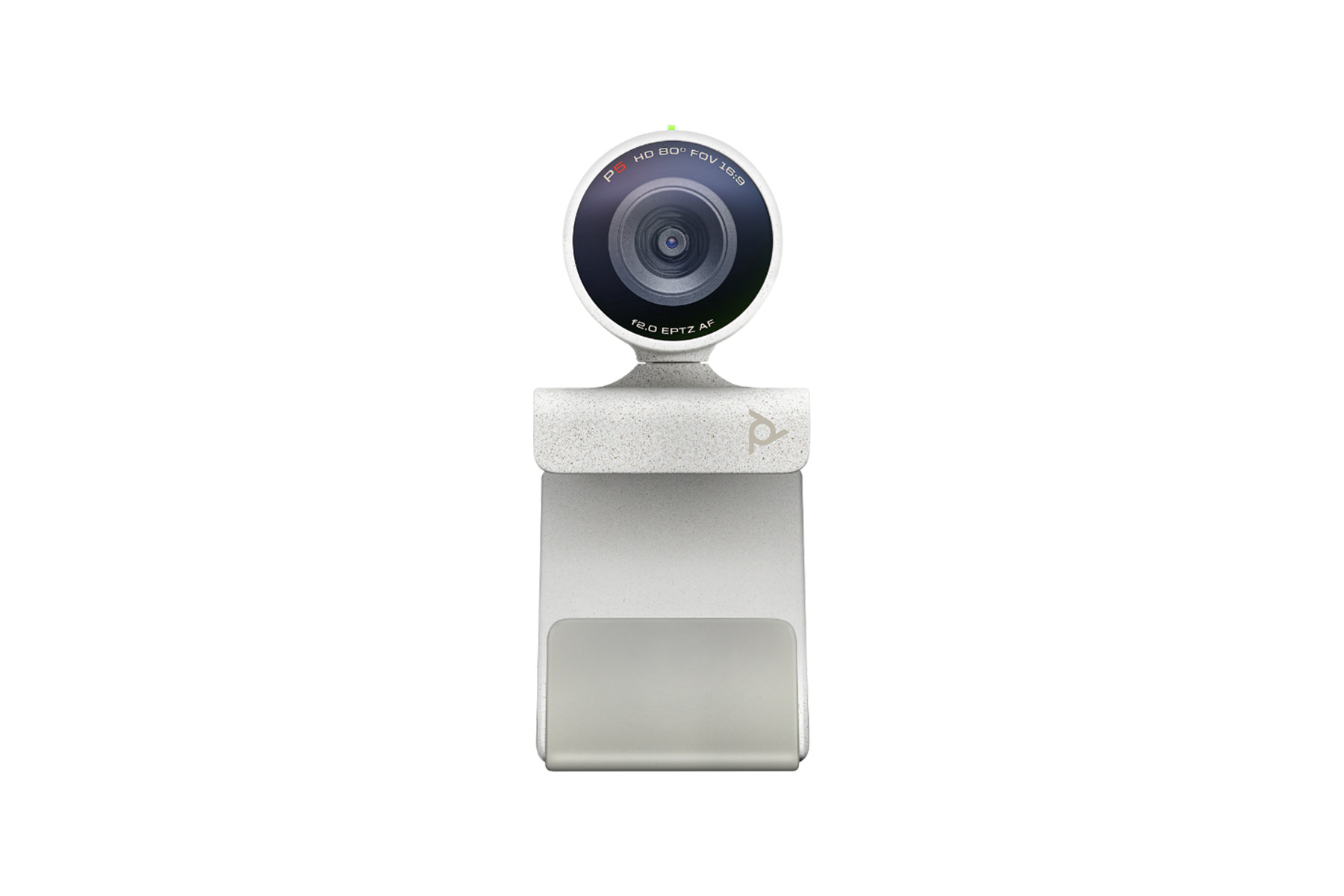



















£45.11*
Prices incl. VAT.
4-9 working days In stock. Ready for immediate dispatch. Delivery Time 4-9 working days
Shipping from £8.99
Product number: 1000031106
- Resolution 1920 x 1080 Full HD
- Camera resolution 2.1 MP
- Field of view 80°
- Frames per Second 30 fps


visunext Services
Product information
For professional meetings
With the Poly Studio P5 webcam, you can ensure professional video transmissions. The finely tuned Poly optics make you look perfect so you can shine in every conversation. All in a small, robust webcam that's easy to set up and use. And IT can easily manage the kit with Poly Lens.
Experience the following highlights:
- Exceptional camera optics and automatic compensation in low light
- Clear conversations wherever you work
- Even on the go: small, robust and portable
- Make your life easy: easy to use, set up, manage and troubleshoot
High-quality camera optics
Automatic low-light compensation and brilliant colours ensure you look your best, even in low light. The 1080p resolution camera with 4x digital zoom puts the focus on you, where it belongs.

The Poly Studio P5's directional microphone captures your voice clearly and ignores noise that interferes with your calls. For an optimal experience, you can pair it with a Poly headset or conference speaker. So you'll always enjoy optimal quality on your most important calls.

Save space
Optimise your setup by using a Poly headset or conference speaker connected wirelessly to the Poly Studio P5 webcam. Simply plug in the USB-A wireless adapter and you're done. Your audio and video transmission is ready to go.

You don't need to learn anything. Poly Studio P5 works with the video apps you already know. A simple USB connection to your PC or Mac will revolutionise your video conferencing experience.
Essential in the home office - the integrated camera lens cover
Sometimes children jump into the picture. Sometimes the dog demands attention. You may be ready for the camera, but your surroundings may not be. The Poly Studio P5's integrated camera lens cover gives you extra control so you're not seen at the wrong time... or the people around you.
Technical data
| Name | Poly Studio P5 Webcam, 1920 x 1080 Full HD, 2.1 MP, 30 fps, 80° |
|---|---|
| Article number | 1000031106 |
| GTIN/EAN | 0197029504487 |
| Manufacturer SKU | 76U43AA |
| Model name | P5 |
| Brand | Poly |
| Product Type | Webcam |
| Product Series | Poly P Series |
| Resolution | 1920 x 1080 Full HD |
| Frames per Second | 30 fps |
| Focus type | Manual & automatic focus |
| Digital Zoom | 4 |
| Camera resolution | 2.1 MP |
| Camera sensor | CMOS |
| Field of view | 80° |
| Inputs | 1x USB-A |
| Features | Microsoft Teams , Zoom |
| Product width | 3.77 cm |
| Product height | 2.4 cm |
| Product depth | 6.2 cm |
| Weight | 0.3 kg |
| Colour | Grey |
| Delivery contents | Quick user guide , mount |
| Condition | New |
| Warranty | 24 Month |
| Warranty type | Bringin service Service and support information |
Product safety
| Person responsible for the EU |
|---|
| HP Deutschland GmbH |
| Herrenberger Straße 140 |
| 71034 Böblingen |
| Germany |
| firmen.kunden@hp.com |



